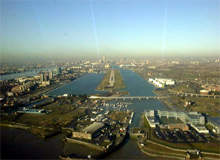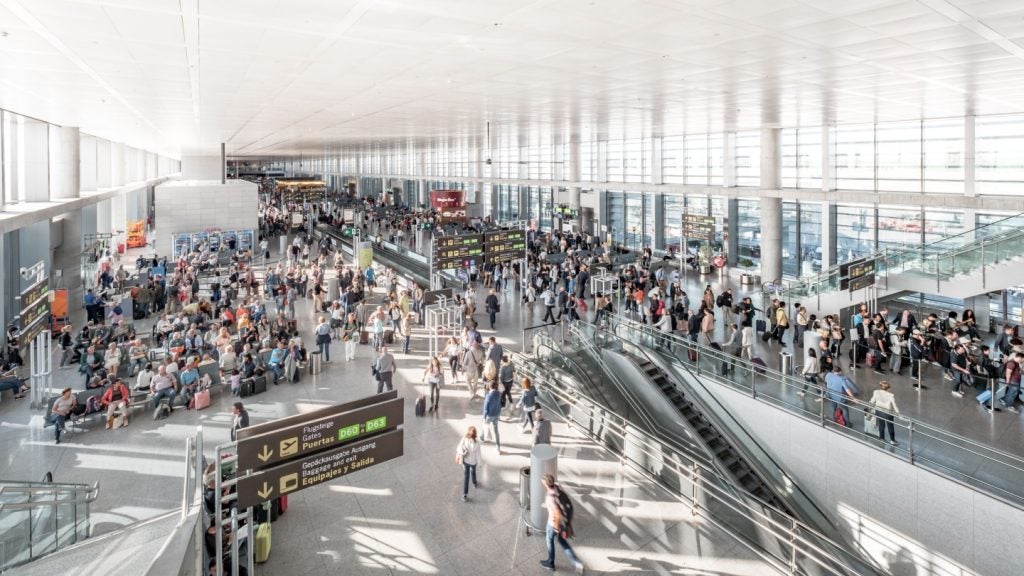
City airports – flight centres specifically situated in urban settings – have transformed commercial flying, especially for the business traveller, during the years that they have started to crop up.
There may be comparatively few of them, but already they are being increasingly used by the corporate market.
As CityJet, an airline that flies in to one of the busiest city airports – London City Airport, says, city airports offer a level of connectivity and ease of ongoing transport larger airports sitting on the outer rim cannot, which is hence, their main appeal to time-poor business travellers.
“It’s all about connectivity. We’re primarily a business-quality service and we’re looking at the ways passengers can get in and out of airports as soon as possible, where they don’t have to queue for hours through security and they can get to the city centre quickly,” a CityJet spokesperson says.
London City Airport offers a prime example of the advantages of city centre airports – conveniently located close to the financial centre and well served by transport links.
See Also:
A light rail system, which extends from the airport, takes the passenger to the city centre in 15 to 20 minutes at a price cheaper than other airports like Heathrow or Stansted’s rail links.
How well do you really know your competitors?
Access the most comprehensive Company Profiles on the market, powered by GlobalData. Save hours of research. Gain competitive edge.

Thank you!
Your download email will arrive shortly
Not ready to buy yet? Download a free sample
We are confident about the unique quality of our Company Profiles. However, we want you to make the most beneficial decision for your business, so we offer a free sample that you can download by submitting the below form
By GlobalDataLONDON CITY AIRPORT – A CASE IN POINT
London City Airport is defined by its orientation on the financial sector and the upper end of the air travel market, though leisure travellers also account for a significant share of its customer numbers.
Originally opened on 26 October 1986, London City Airport handled 133,000 passengers in its first full year of operation. By its last full year of trading this number had swelled to 2.9 million passengers, up 23% on the previous year.
Due to its runway being only 1,080m in length it was originally only accessible to a limited number of commercial aircraft but an application was soon submitted to extend the runway’s length.
The extended runway opened on 5 March 1992 leading to an extension of the number of passengers being handled to 245,000 for 1993. The number of passengers handled continues to rise. As passenger numbers go up, additional facilities have been added to the airport including new aircraft stands at the western end of the apron and in 2002 a new jet centre for corporate aviation.
Due to the growing popularity of London City Airport, further development is planned. Permission was granted in 2001 for the construction of an extended apron with five additional aircraft parking stands to the east of the terminal, due for opening some time around the middle of this year.
A new departure lounge, with shops and seating areas is penned for the previous site of the Meridian business centre – an unused conference facility – hence making the airport even more attractive to the ever important international travel market.
A CHANGE IN FOCUS
Rupa Haria of London City Airport says service like this are becoming increasingly important for city airports, which are now catching the eye of not only the international business traveller but the travel savvy high-end leisure market.
“While the airport is aimed at the corporate market one third of our passengers are leisure travellers and we anticipate that the proportion will go up because airlines are continuing to add new routes,” Haria says. “Destinations such as Barcelona and Madrid are popular and a bulk of our leisure travel is made up of winter sports locations.”
The high demand for the convenience of inner city travel is illustrated by London City Airport’s expansion plans. The management of London City Airport has submitted a plan for the development of the airport that outlines their intention to increase carrying capacity to eight million passengers by 2030.
Although a second runway is not proposed a new hangar is to be built to allow aircraft maintenance, and a replacement fire station provided in phase one of the development which is planned to be complete by 2015.
Phases 2 and 3 are to be undertaken between 2015 and 2030.
These later phases will provide further aircraft parking places to be built to the east of the terminal, and a taxiway would be constructed alongside and to the south of the runway thereby avoiding the need for aircraft to back-track on the runway.
In the meantime a planning application to the London Borough of Newham, made in August 2007, will allow the increase in flights a year to rise from 80,000 to 120,000 by 2010.
THE AIRLINES LIKE IT TOO
According to Sue Redmond of British Airways, London City Airport is an example of a city airport which fits particularly well with BA’s corporate vision. One-way flights can be taken without there being any penalty attached, potentially allowing customers to take flights into and out of cities from different airports.
“We are focusing on London City Airport because it is an important growth area for us. Next year BA will start operating an all business-class New York service from the airport,” Redmond says.
“We are seeing a high demand for inner city flight and increasing demand for certain routes. We are introducing routes which our customers have specifically asked for, such as Amsterdam, Warsaw and Nice.
“Most importantly our customers are looking for scheduling and frequency. They want the right flights at the right times as close to business centres as possible. City airports are the most convenient airports for them.”
Concentrating on demand from international business, which is centred on the nearby financial district of the Docklands and the older financial district of the City of London – both of which are connected to it the airport by the Docklands Light Railway – London City Airport currently flies to most major European airports and is expanding this coverage in 2008 to Amsterdam, Eindhoven, Nice and Warsaw.
London City Airport is also set to move into the area of scheduled transatlantic flights in 2008 following an announcement by British Airways of its intention to begin such flights from 2009 to New York City using the Airbus 318 which will be configured for this purpose with a luxury all business-class cabin featuring 32 lie-flat beds.
of commercial aircraft.”
In light of the orientation on the business community and corporate aviation London City Airport is also expanding this area of their operations with the construction of a dedicated facility for this traffic.
The Jet Centre will provide a complete corporate aviation package that includes VIP lounges and a dedicated VIP stand, there is also parking for a minimum of 20 aircraft and immigration, customs and crew facilities.
All other necessary functions are provided by London City Airport itself which has also developed its own worldwide executive jet charter brokering service in the form of a subsidiary PrivateJet, which service marked its first anniversary in April 2007 amidst predictions of 100% growth in its second year of operation.





